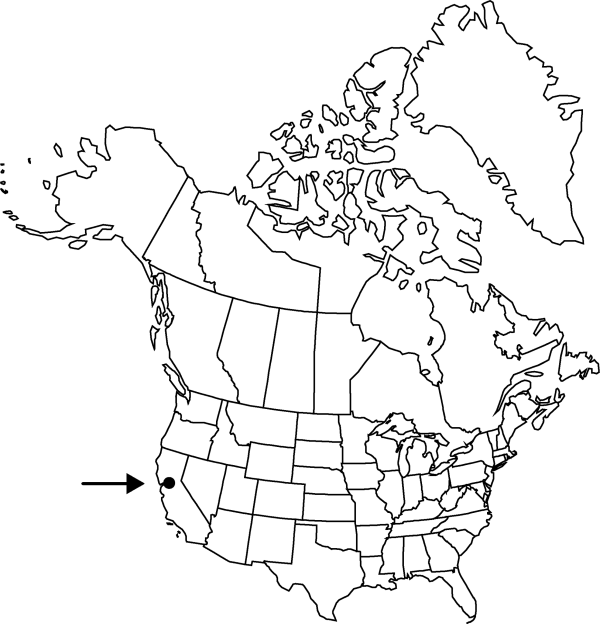Difference between revisions of "Atriplex parishii var. depressa"
Rhodora 102: 423. 2001.
FNA>Volume Importer |
FNA>Volume Importer |
||
| Line 28: | Line 28: | ||
|distribution=Calif. | |distribution=Calif. | ||
|discussion=<p>Of conservation concern.</p><!-- | |discussion=<p>Of conservation concern.</p><!-- | ||
| − | --><p>Atriplex parishii var. depressa occurs with Distichlis spicata, Frankenia salina, Centromadia pungens, Spergularia macrotheca, and Astragalus tener. This variety was cited in W. L. Jepson (1909–1943, vol. 1) and in L. Abrams and R. S. Ferris (1923–1960, vol. 2) as a synonym of Atriplex parishii but treated in the modern Jepson Manual as a distinct species, where it was separated in the key from A. parishii by having stems merely glabrous to densely scaly near the tips, versus woolly near the tips in A. parishii. The vestiture appears felty, with individual trichomes not usually evident.</p> | + | --><p><i>Atriplex parishii </i>var.<i> depressa</i> occurs with <i>Distichlis spicata</i>, <i>Frankenia salina</i>, <i>Centromadia pungens</i>, <i>Spergularia macrotheca</i>, and Astragalus tener. This variety was cited in W. L. Jepson (1909–1943, vol. 1) and in L. Abrams and R. S. Ferris (1923–1960, vol. 2) as a synonym of <i>Atriplex parishii</i> but treated in the modern Jepson Manual as a distinct species, where it was separated in the key from <i>A. parishii</i> by having stems merely glabrous to densely scaly near the tips, versus woolly near the tips in <i>A. parishii</i>. The vestiture appears felty, with individual trichomes not usually evident.</p> |
|tables= | |tables= | ||
|references= | |references= | ||
| Line 52: | Line 52: | ||
|publication year=2001 | |publication year=2001 | ||
|special status= | |special status= | ||
| − | |source xml=https://jpend@bitbucket.org/aafc-mbb/fna-data-curation.git/src/ | + | |source xml=https://jpend@bitbucket.org/aafc-mbb/fna-data-curation.git/src/8f726806613d60c220dc4493de13607dd3150896/coarse_grained_fna_xml/V4/V4_691.xml |
|genus=Atriplex | |genus=Atriplex | ||
|subgenus=Atriplex subg. Obione | |subgenus=Atriplex subg. Obione | ||
Revision as of 17:30, 18 September 2019
Stems prostrate to decumbent, white, to 2 dm, usually brittle, glabrous to scaly, grayish scurfy; branches terete. Leaves sometimes opposite, proximalmost usually sessile; blade ovate to cordate, 3–7 mm, margin entire, apex acute, usually densely white scaly. Flowers in axils of opposite, bracteate leaves, pistillate in clusters of 4, these and subtending leaves crowded on branchlets, internodes at anthesis 2 mm. Staminate flowers in small, yellow, axillary glomerules, calyx 4-lobed. Fruiting bracteoles deciduous, ovate (ovate-hastate) or rhombic, 2–3.5 mm, united to near summit, entire or obscurely denticulate, faces tuberculate, mostly white scurfy. Seeds reddish brown, 1–1.5 mm.
Phenology: Flowering late summer–fall.
Habitat: Alkaline grasslands, often on clay soils
Elevation: 0-200(-300) m
Discussion
Of conservation concern.
Atriplex parishii var. depressa occurs with Distichlis spicata, Frankenia salina, Centromadia pungens, Spergularia macrotheca, and Astragalus tener. This variety was cited in W. L. Jepson (1909–1943, vol. 1) and in L. Abrams and R. S. Ferris (1923–1960, vol. 2) as a synonym of Atriplex parishii but treated in the modern Jepson Manual as a distinct species, where it was separated in the key from A. parishii by having stems merely glabrous to densely scaly near the tips, versus woolly near the tips in A. parishii. The vestiture appears felty, with individual trichomes not usually evident.
Selected References
None.
